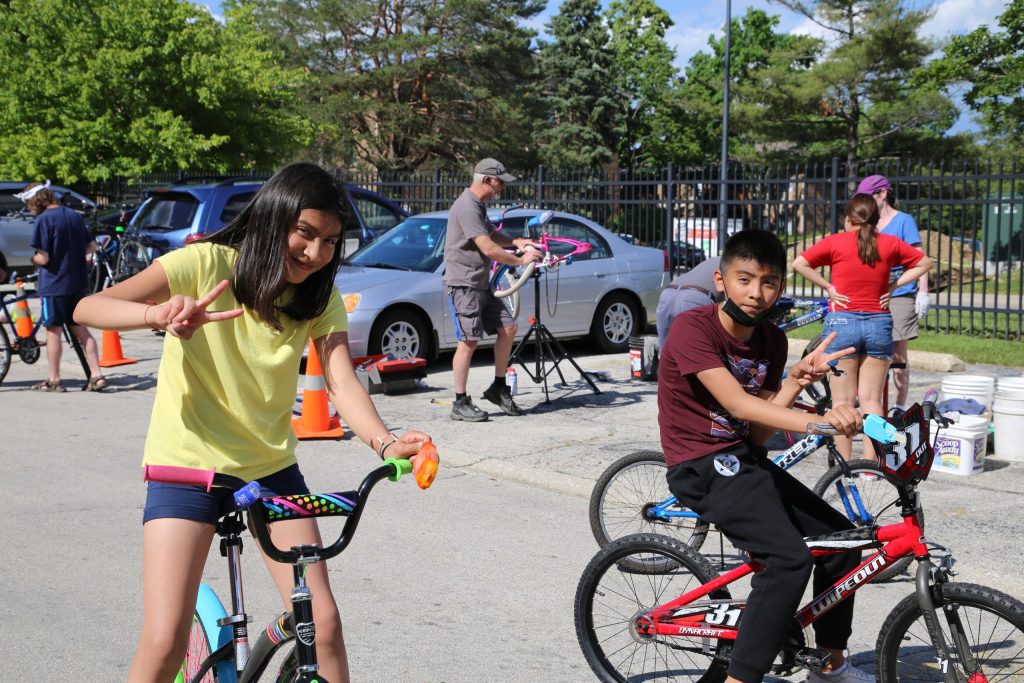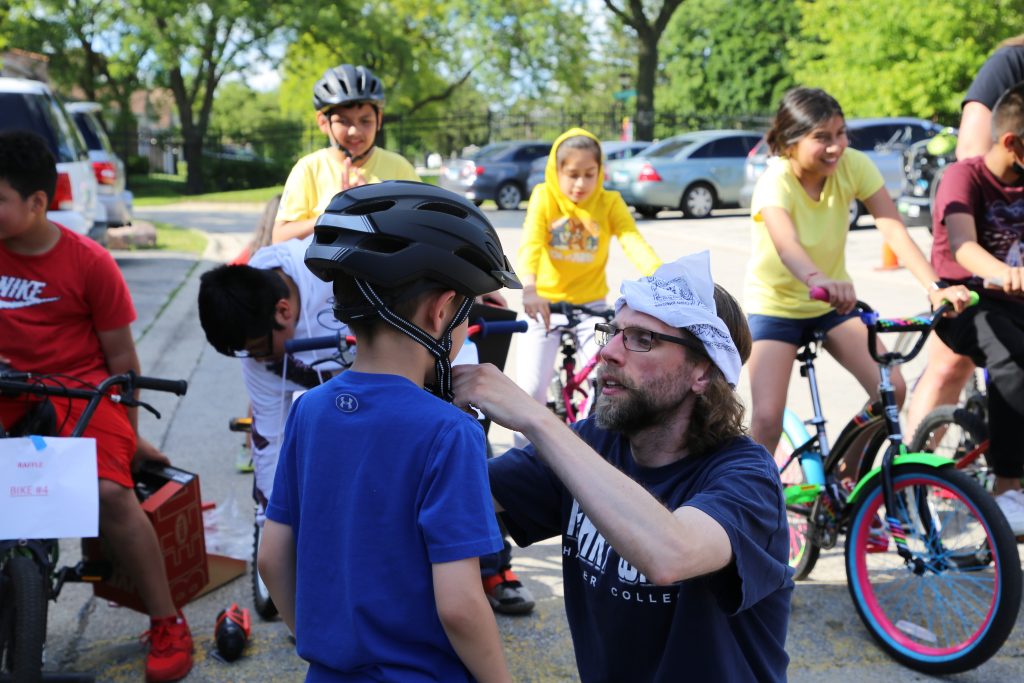If you recall the New Testament story of the loaves and fishes, you’d suspect a similar miracle happened in Palatine in early June, only this time involving bicycles and related gear.
Local community groups, led by the Bike Palatine Club and the Palatine Partners for Our Communities (POC), came together for a mini workshop teaching kids the basics of safety checks for their bikes before rolling out for many days of summertime riding. Special focus was given to proper tire inflation, chain lubrication, and brake adjustment.
Four bike club volunteers staffed the workshop and later helped with fitting 16 helmets that kids were given, courtesy of the Palatine Rotary Club.
But it wasn’t just bike helmets. The list of donated gear and bikes was impressive: Multiple bikes were donated by club volunteer Tom Lucas and Wayne Mikes, Bike Palatine Club president and Mikes Bike Shop owner; cable locks came from SamCycle Electric Bikes; and Crank Revolution donated bells, water bottles and cages, and safety lights. POC added Lego sets to the raffle and offered popsicle treats throughout.
Building on the success of a similar event in 2019, Partners for Our Communities worked with multiple community organizations for this year’s event. More than 60 people came out, including park district staff, club volunteers, parents, young riders, and several Palatine police officers who kicked around a soccer ball with the kids.
Partners for Our Communities is a local Palatine agency that provides resources and programs focusing on adult literacy, health and wellness, and youth engagement.
TIPS FOR ORGANIZING AN EVENT LIKE THIS
Successful community initiatives don’t just happen overnight. Here are a few tips for improving one’s chances of realizing your goals when organizing an event like this one:
- Start planning early. Allow time for collaboration and cooperative efforts for a community initiative.
- Leverage existing relationships. Include organizations with resources and the recipient groups who need them.
- Promote event. Use multiple channels to spread the word: flyers highlighting purpose with basic information, maximization of social media, and appropriate day-of signage.
- Lock in resources. Confirm staff and volunteers 3-6 weeks prior to event.
- Offer thanks in a timely fashion. Share photos/videos with all donors and participants.
This blog post was written by guest contributor Ralph Banasiak. Photos courtesy of Banasiak.


